Related Research Articles
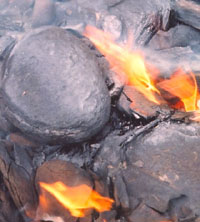
Oil shale is an organic-rich fine-grained sedimentary rock containing kerogen from which liquid hydrocarbons can be produced. In addition to kerogen, general composition of oil shales constitutes inorganic substance and bitumens. Based on their deposition environment, oil shales are classified as marine, lacustrine and terrestrial oil shales. Oil shales differ from oil-bearing shales, shale deposits that contain petroleum that is sometimes produced from drilled wells. Examples of oil-bearing shales are the Bakken Formation, Pierre Shale, Niobrara Formation, and Eagle Ford Formation. Accordingly, shale oil produced from oil shale should not be confused with tight oil, which is also frequently called shale oil.
Shale oil is an unconventional oil produced from oil shale rock fragments by pyrolysis, hydrogenation, or thermal dissolution. These processes convert the organic matter within the rock (kerogen) into synthetic oil and gas. The resulting oil can be used immediately as a fuel or upgraded to meet refinery feedstock specifications by adding hydrogen and removing impurities such as sulfur and nitrogen. The refined products can be used for the same purposes as those derived from crude oil.
Viru Keemia Grupp is a private Estonian large-scale industrial enterprise. It focuses on oil shale mining, shale oil, combined heat and power production and production and marketing of fine chemical products.
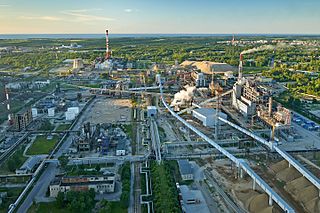
The oil shale industry is an industry of mining and processing of oil shale—a fine-grained sedimentary rock, containing significant amounts of kerogen, from which liquid hydrocarbons can be manufactured. The industry has developed in Brazil, China, Estonia and to some extent in Germany and Russia. Several other countries are currently conducting research on their oil shale reserves and production methods to improve efficiency and recovery. Estonia accounted for about 70% of the world's oil shale production in a study published in 2005.

Shale oil extraction is an industrial process for unconventional oil production. This process converts kerogen in oil shale into shale oil by pyrolysis, hydrogenation, or thermal dissolution. The resultant shale oil is used as fuel oil or upgraded to meet refinery feedstock specifications by adding hydrogen and removing sulfur and nitrogen impurities.
Oil shale economics deals with the economic feasibility of oil shale extraction and processing. Although usually oil shale economics is understood as shale oil extraction economics, the wider approach evaluates usage of oil shale as a whole, including for the oil-shale-fired power generation and production of by-products during retorting or shale oil upgrading processes.

Environmental impact of the oil shale industry includes the consideration of issues such as land use, waste management, and water and air pollution caused by the extraction and processing of oil shale. Surface mining of oil shale deposits causes the usual environmental impacts of open-pit mining. In addition, the combustion and thermal processing generate waste material, which must be disposed of, and harmful atmospheric emissions, including carbon dioxide, a major greenhouse gas. Experimental in-situ conversion processes and carbon capture and storage technologies may reduce some of these concerns in future, but may raise others, such as the pollution of groundwater.

The history of the oil shale industry started in ancient times. The modern industrial use of oil shale for oil extraction dates to the mid-19th century and started growing just before World War I because of the mass production of automobiles and trucks and the supposed shortage of gasoline for transportation needs. Between the World Wars oil shale projects were begun in several countries.
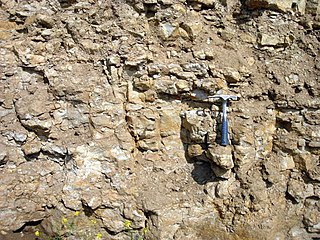
Kukersite is a light-brown marine type oil shale of Ordovician age. It is found in the Baltic Oil Shale Basin in Estonia and North-West Russia. It is of the lowest Upper Ordovician formation, formed some 460 million years ago. It was named after the German name of the Kukruse Manor in the north-east of Estonia by the Russian paleobotanist Mikhail Zalessky in 1917. Some minor kukersite resources occur in sedimentary basins of Michigan, Illinois, Wisconsin, North Dakota, and Oklahoma in North America and in the Amadeus and Canning basins of Australia.
Oil shale in China is an important source of unconventional oil. A total Chinese oil shale resource amounts of 720 billion tonnes, located in 80 deposits of 47 oil shale basins. This is equal to 48 billion tonnes of shale oil. At the same time there are speculations that the actual resource may even exceed the oil shale resource of the United States.

There are two kinds of oil shale in Estonia, both of which are sedimentary rocks laid down during the Ordovician geologic period. Graptolitic argillite is the larger oil shale resource, but, because its organic matter content is relatively low, it is not used industrially. The other is kukersite, which has been mined for more than a hundred years. Kukersite deposits in Estonia account for 1% of global oil shale deposits.

Narva Oil Plant is a commercial scale shale oil retorting facility located in Auvere near Narva, Estonia. The plant produces shale oil from oil shale by using Galoter/Eneffit technology. The facility belongs to Enefit Energiatootmine, a subsidiary of Eesti Energia.
The Kiviter process is an above ground retorting technology for shale oil extraction.
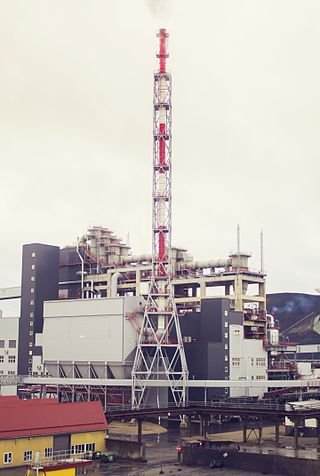
The Galoter process is a shale oil extraction technology for the production of shale oil, a type of synthetic crude oil. In this process, the oil shale is decomposed into shale oil, oil shale gas, and spent residue. Decomposition is caused by mixing raw oil shale with hot oil shale ash generated by the combustion of carbonaceous residue (semi-coke) in the spent residue. The process was developed in the 1950s, and it is used commercially for shale oil production in Estonia. There are projects for further development of this technology and expansion of its usage, e.g., in Jordan and the USA.
The Alberta Taciuk process is an above-ground dry thermal retorting technology for extracting oil from oil sands, oil shale and other organics-bearing materials, including oil contaminated soils, sludges and wastes. The technology is named after its inventor William Taciuk and the Alberta Oil Sands Technology and Research Authority.
The Fushun process is an above-ground retorting technology for shale oil extraction. It is named after the main production site of Fushun, Liaoning province in northeastern China.
The Hytort process is an above-ground shale oil extraction process developed by the Institute of Gas Technology. It is classified as a reactive fluid process, which produces shale oil by hydrogenation.
Oil shale in Serbia is a large, but undeveloped energy resource. Serbia is estimated to have a total resource of 4.81 billion tonnes of oil shale, with up to 3.6 billion tonnes of recoverable reserves, all concentrated within the Aleksinac, Vranje, Senonian Tectonic Trench, Valjevo, Western Morava, Kruševac, Babušnica, Kosanica, Niš and Levač basins, which are all located in the Central - Eastern part of the country. Serbia has around 21 oil shale deposits of various qualities and oil content. The biggest deposits of commercial potential are near Aleksinac and Vina-Zubetin. Serbian oil shale is of sapropel type and sapropel-coaly type.

Esimene Eesti Põlevkivitööstus was an oil shale company located in Kohtla-Järve, Estonia. It was a predecessor of Viru Keemia Grupp, a shale oil extraction company.
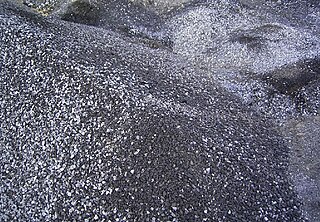
Spent shale or spent oil shale is a solid residue from the shale oil extraction process of producing synthetic shale oil from oil shale. It consists of inorganic compounds (minerals) and remaining organic matter known as char—a carbonaceous residue formed from kerogen. Depending on the extraction process and the amount of remaining organic matter, spent shale may be classified as oil shale coke, semi-coke or coke-ash residue, known also as oil shale ash. According to the European Union waste list all these types of spent shale are classified as hazardous waste.
References
- ↑ Reinsalu, Enno; Aarna, Indrek (2015). "About technical terms of oil shale and shale oil" (PDF). Oil Shale. A Scientific-Technical Journal. 32 (4). Estonian Academy Publishers: 291–292. doi:10.3176/oil.2015.4.01. ISSN 0208-189X . Retrieved 2016-01-16.
- 1 2 3 4 Koel, Mihkel (1999). "Estonian oil shale". Oil Shale. A Scientific-Technical Journal (Extra). Estonian Academy Publishers. ISSN 0208-189X . Retrieved 2009-06-23.
- 1 2 Kogerman, P. N. (1925). "The present status of the oil-shale industry in Estonia" (PDF). Journal of the Institution of Petroleum Technologists. 11 (50). London: Institute of Petroleum. ISSN 0368-2722 . Retrieved 2009-06-23.
- ↑ Schora, F. C.; Tarman, P. B.; Feldkirchner, H. L.; Weil, S. A. (1976). "Hydrocarbon fuels from oil shale". Proceedings. 1. American Institute of Chemical Engineers: 325–330. Bibcode:1976iece.conf..325S. A77-12662 02-44.
- ↑ Association for the Advancement of Baltic Studies (1977). "Usage of Estonian oil shale". Journal of Baltic Studies. 8–9. University of Michigan: 160. Retrieved 2009-06-23.
- ↑ "Detailed history". Viru Keemia Grupp. Archived from the original on 2012-04-14. Retrieved 2011-07-09.
- ↑ Valgma, Ingo. "Map of oil shale mining history in Estonia". Mining Institute of Tallinn Technical University. Archived from the original on 2014-08-17. Retrieved 2009-06-23.
- ↑ Ots, Arvo (2006) [2004]. Toni Tyson; Mary McQuillen (eds.). Oil Shale Fuel Combustion. Tallinn: Arv Ots; Eesti Energia. p. 15. ISBN 978-9949-13-710-7.